
Previously, I gave you my thoughts on the three best travel guides I have found over the years. If you haven’t read that post, I’d recommend reading it first before continuing with this one.
The books in the last post are the very best out of many I’ve bought and tried. Here, I’m including two more that didn’t make the cut for the best because of their lack of polish or execution. Yet, they are still worth mentioning because of the concepts behind them
CITIx60 City Guides
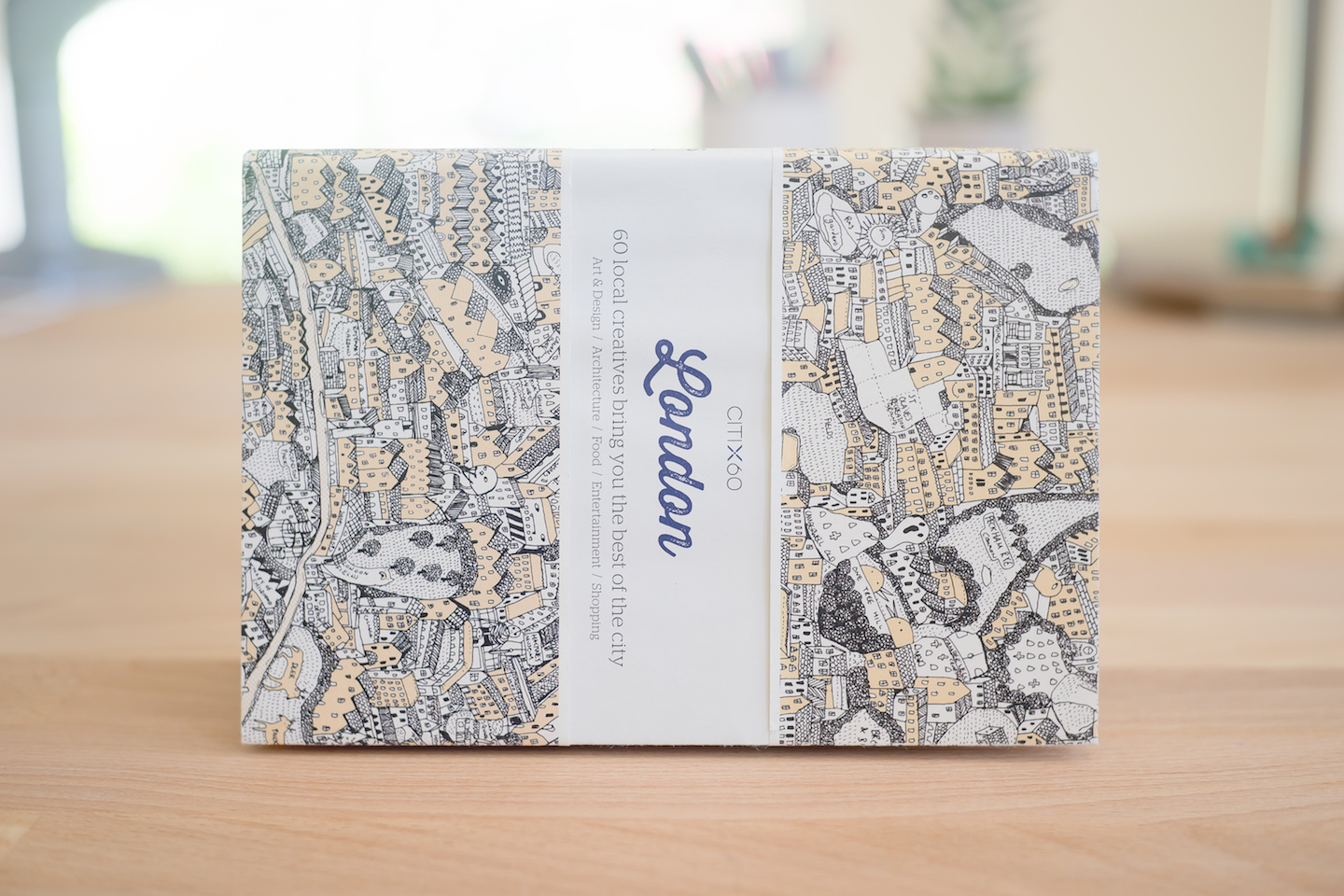
95 cities
132 pages, softcover
4.9” x 6.8” x 0.5”
Using the CITIx60 series is like relying on a diverse group of 60 creative friends for recommendations on what to do and see. You must care as much about the quality of the person providing them as the recommendations themselves.
History
CITIx60 is a project from one of my favorite publishers, Hong Kong based viction:ary. Each edition builds on viction:ary’s strong history as a publisher of design and art books. The concept is basic, but well executed: 60 local creatives choose 60 hangouts in the city. The series has steadily covered more cities and even expanded to CITIxFamily, a series specially made for families with children.
Design
The cover of each edition is wrapped in a stunning, fold-out, illustrated map of the city (the maps are also available as standalone art prints). The pages inside are soft and mostly filled with photography. Just like the LOST iN series, each section is color-coded, though not as subtly.
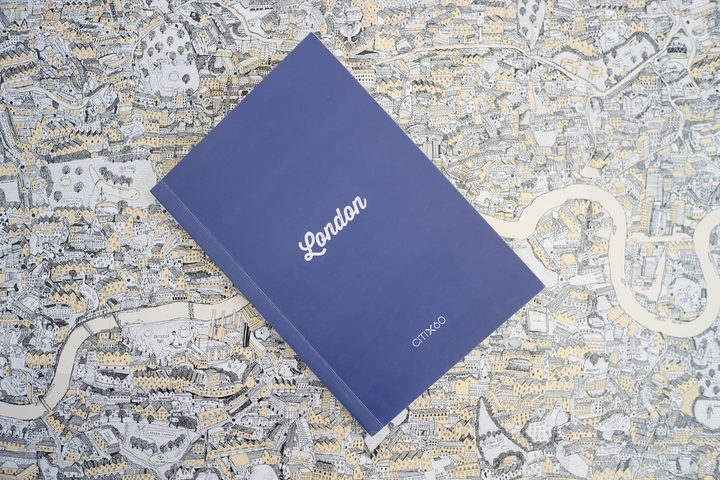
Unfortunately, I think the graphic design and layout in the CITIx60 travel guide series isn’t as effective as in some of the other guides I’ve reviewed. I don’t sense the clear visual hierarchy of the LOST iN and Wallpaper* guides. The information density is similar to that of Monocle’s, but absent is the balance between density and readability.
All this is a pity because the concept behind the CITIx60 is so strong. If I was tasked with improving viction:ary’s design, I would take a mainly reductive approach. I’d remove the icons (clock, house, url, etc.) denoting details about each venue. I’d remove the QR codes, the shadows behind map pins and all instances of text on images. I would then increase the visual contrast between elements like the venue description and the curators quote, perhaps using color, type weight or even a new typeface.
Content
While the design may leave something to be desired, the content and the concept behind it couldn’t be better. Of course, CITIx60 contains some of the same elements any guidebook has. At the front, the Before You Go section introduces the city with useful information like public transportation, emergency numbers, festivals, etc. The Count to 10 section simply lists out the top attractions, food, etc. At the end, there are maps of neighborhoods with pins representing each of the venues listed and graph and ruled paper for notes.
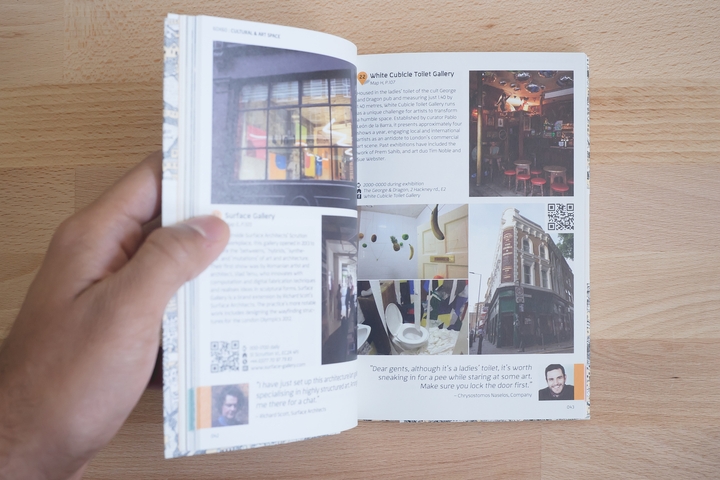
In between, most of the pages are dedicated to the curated list of places to see. The list is broken down into sections such as Landmarks & Architecture and Restaurants & Cafés. Each section begins with an introduction and descriptions of the creatives who curated that section. Every venue is dedicated one or two pages following a consistent formula. You’ll find photography, a short explanation, details like location, times, etc. and a quote from the creative(s) who chose the place.
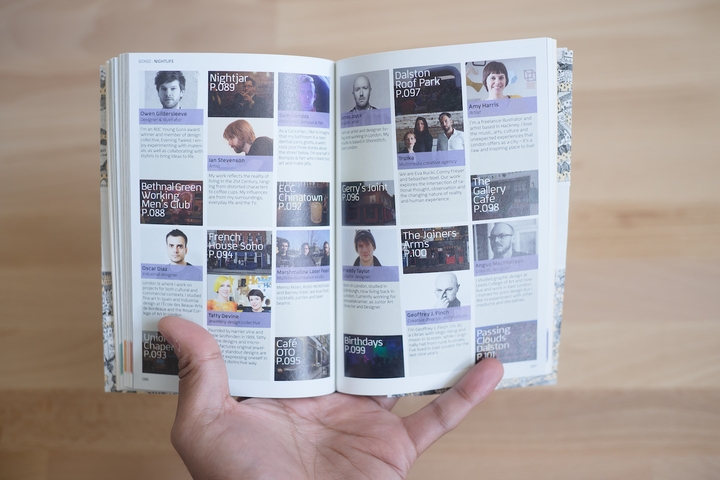
The CITIx60 concept may be formulaic, but the great, creative people involved in producing them makes this travel guide series unique. Their stories and their opinions about the places they choose are what attracted me to this the series in the first place. If you were looking for Yelp where only the best creatives can leave reviews, look no further.
Verdict
Using the CITIx60 series is like relying on a diverse group of 60 creative friends for recommendations on what to do and see. You must care as much about the quality of the person providing them as the recommendations themselves.
The HUNT Guides
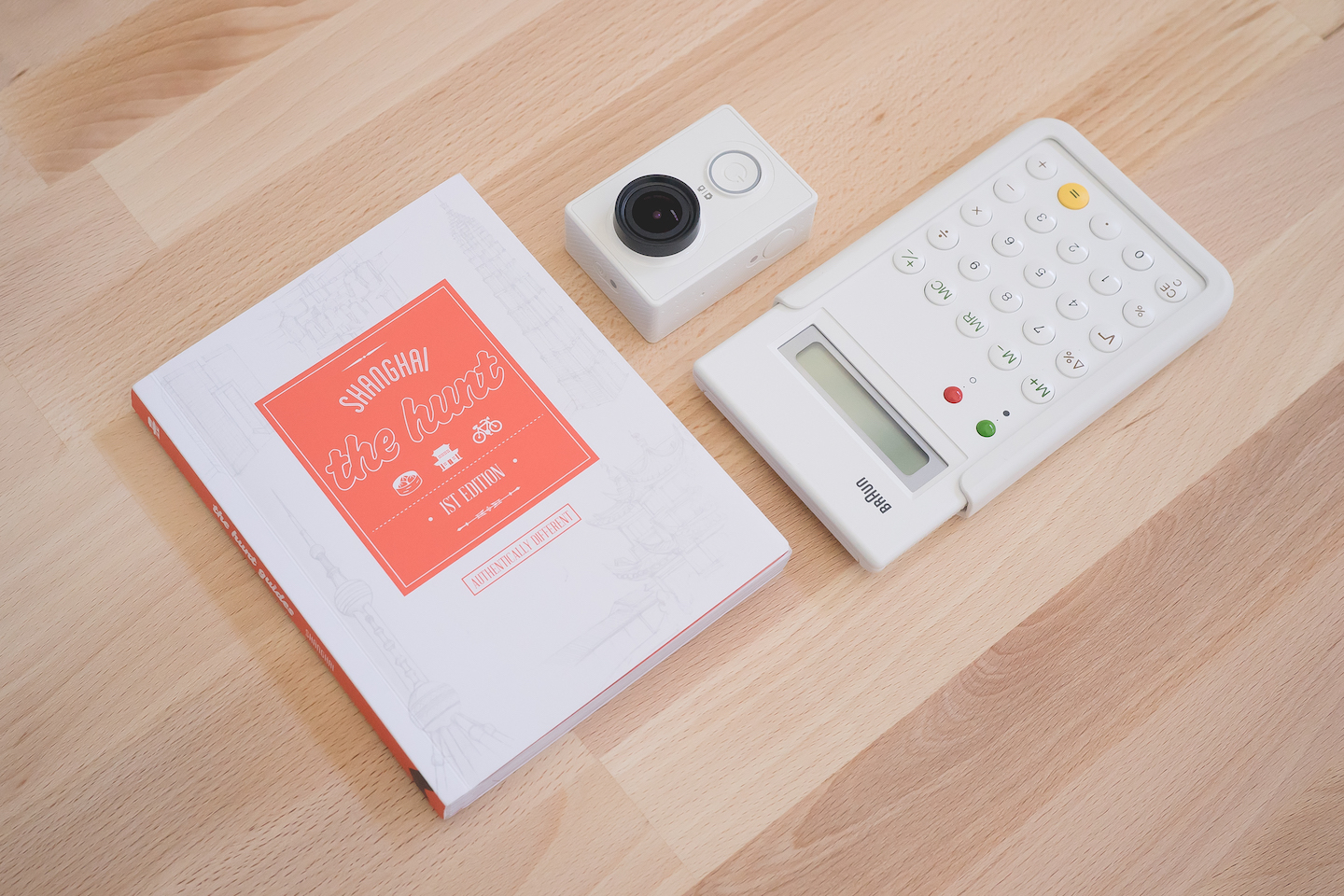
22 cities
128 pages, softcover
4” x 6” x 1”
While not as well designed as the other books in this list and heavily catering to western travelers, the HUNT guides are still worth mentioning because of their unique approach. They are neighborhood-by-neighborhood listings of places to go and things to do. Perfect for wanderers.
History
The HUNT guides began life as Eat Shop guides from Portland in 2003. They have since gone through many evolutions, arriving at what we see today. Every issue is written and photographed by a different resident of that city and is published by Gatehouse.
Design
There is a lot that the HUNT Guides do that I would never do in my own design work. When flipping through the book about Shanghai, I counted at least half a dozen different typefaces, not counting different weights, colors, italics, etc. Throughout the book, there are so many styles of icons, illustrations, borders and flourishes, all without a semblance of harmony. There is text on images and swaths of centered text. There are symbols used in the maps without any legend explaining them.
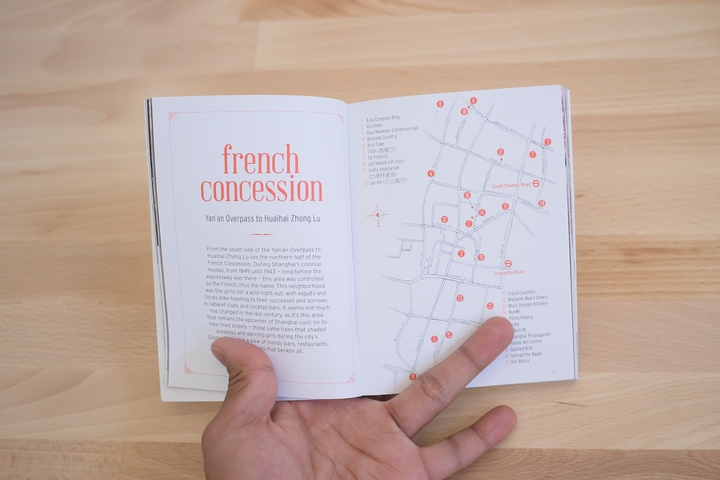
Moreover, they go against my core intention as a designer — to produce the simplest, most minimal solutions to the problem at hand. I disagreed with HUNT’s design decisions so much in fact that I almost didn’t include them in this list.
Content
What made the HUNT Guides worth mentioning here is again the concept behind the content. Aside from the 48 Hours In, a section very similar to Wallpaper’s 24 hours, the book is divided by neighborhood instead of type of venue. That is genius. It completely changes the traveller’s relationship with the city.
I, on many trips, frequently pick one interesting neighborhood and spend the day exploring on foot. This guide is a perfect companion on that sort of travel.
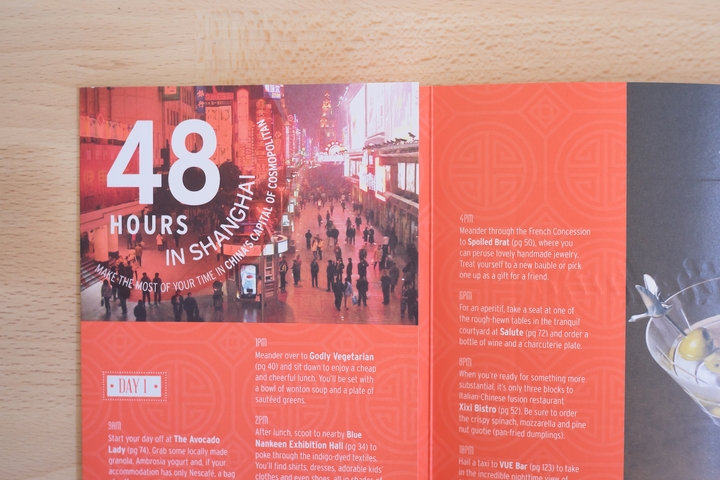
The only thing I question about the HUNT guide’s content is its authenticity. My fiancée Q, a Shanghai native, felt that the venues chosen for the Shanghai guide are squarely targeted at westerners. There are numerous mentions of bar crawls, MSG free food and bagels. The writer even mentions that she moved to Shanghai 6 years before writing the book, speaking not a word of Mandarin.
I’ll admit that I’m not looking for cultural immersion in these books, but at the same time, I’m not looking to find a completely western life in a foreign country. This is probably not a problem when visiting western countries, but I’d keep this in mind if you are going to Asia.
Verdict
While not as well designed as the other books in this list and heavily catering to western travelers, the HUNT guides are still worth mentioning because of their unique approach. They are neighborhood-by-neighborhood listings of places to go and things to do. Perfect for wanderers.
Final Thoughts
While execution is the most difficult and important aspect of creative work, the idea or concept needs to be equally strong. These two guides are prime examples of concepts that could have been executed a little better.
Regardless, they are still far better than most traditional guides out there and are still worth picking up.
Thanks to Dustin Ho, Jeffrey Lin and Chuan Shi for reading drafts of this.